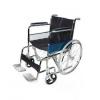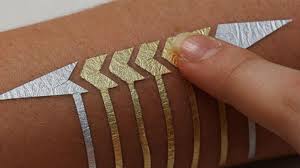
Breaking News
 At Least 10 Children Killed by Israeli Drones While Waiting Outside Clinic for Medical Aid and Food
At Least 10 Children Killed by Israeli Drones While Waiting Outside Clinic for Medical Aid and Food
 IRS Gives Churches Blessing to Endorse Candidates
IRS Gives Churches Blessing to Endorse Candidates
 17 Out-Of-Place Artifacts That Suggest High-Tech Civilizations Existed Thousands (Or Millions)...
17 Out-Of-Place Artifacts That Suggest High-Tech Civilizations Existed Thousands (Or Millions)...
Top Tech News
Magic mushrooms may hold the secret to longevity: Psilocybin extends lifespan by 57%...
 Unitree G1 vs Boston Dynamics Atlas vs Optimus Gen 2 Robot– Who Wins?
Unitree G1 vs Boston Dynamics Atlas vs Optimus Gen 2 Robot– Who Wins?
 LFP Battery Fire Safety: What You NEED to Know
LFP Battery Fire Safety: What You NEED to Know
 Final Summer Solar Panel Test: Bifacial Optimization. Save Money w/ These Results!
Final Summer Solar Panel Test: Bifacial Optimization. Save Money w/ These Results!
 MEDICAL MIRACLE IN JAPAN: Paralyzed Man Stands Again After Revolutionary Stem Cell Treatment!
MEDICAL MIRACLE IN JAPAN: Paralyzed Man Stands Again After Revolutionary Stem Cell Treatment!
 Insulator Becomes Conducting Semiconductor And Could Make Superelastic Silicone Solar Panels
Insulator Becomes Conducting Semiconductor And Could Make Superelastic Silicone Solar Panels
 Slate Truck's Under $20,000 Price Tag Just Became A Political Casualty
Slate Truck's Under $20,000 Price Tag Just Became A Political Casualty
 Wisdom Teeth Contain Unique Stem Cell That Can Form Cartilage, Neurons, and Heart Tissue
Wisdom Teeth Contain Unique Stem Cell That Can Form Cartilage, Neurons, and Heart Tissue
 Hay fever breakthrough: 'Molecular shield' blocks allergy trigger at the site
Hay fever breakthrough: 'Molecular shield' blocks allergy trigger at the site
MIT and Microsoft Research made a 'smart' tattoo that remotely controls your phone

The technology, which is described on MIT's website and will be presented in full at a wearables symposium next month, is called DuoSkin. The researchers say you can design a circuit using any graphic software, stamp out the tattoo in gold leaf (which is conductive to electricity), and then apply other commodity materials and components that would make the tattoo interactive.
The paper presents three key use cases for the tattoo: you could use it to turn your skin into a trackpad, design it to change color based on temperature, or pull data from the tattoo. In one photo shared by MIT the tattoo even includes LED lights, creating a kind of glowing display on the skin.
This isn't the first time researchers have tried to turn our "dumb" epidermis into the equivalent of a touchscreen. Back in 2010 a Carnegie Mellon student, also in collaboration with Microsoft Research, came up with something called Skinput, which was designed to turn your wrist or the back of your hand into a "gestural finger input canvas."

 WHAT HAPPENED TO TRUMP?
WHAT HAPPENED TO TRUMP? AI Getting Better at Medical Diagnosis
AI Getting Better at Medical Diagnosis

